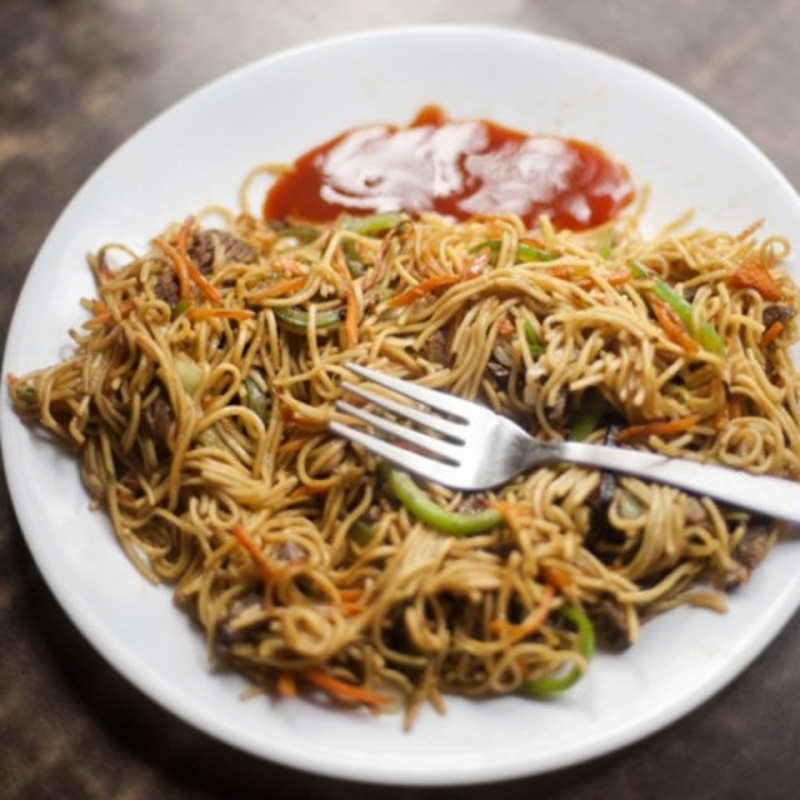277
You’re craving a savory and textured chicken chow mein dish, but which version will you make? American-style, with its sweeter sauce and thicker noodles? Cantonese Gai See Chow Mein, featuring fresh veggies and tender chicken? Or perhaps the Dry Hong-Kong-style, with crispy noodles and a harmonious balance of flavors? Whichever you choose, mastering the nuances of this beloved stir-fry dish will elevate your culinary skills. Follow a few simple steps, and you’ll be serving up a flavorful, textured culinary experience in no time – and discover the secrets to customizing it to your taste.

3 Different Versions
As you explore the world of chicken chow mein, you’ll encounter distinct variations that cater to different tastes and traditions. You’ll find that American Chicken Chow Mein, Cantonese Gai See Chow Mein, and Dry Hong-Kong-style Chicken Chow Mein each boast unique characteristics that set them apart from one another.1. American Chicken Chow Mein
American Chicken Chow Mein: A Fusion Dish In American Chinese restaurants, you’ll often find a sweeter, thicker-sauced version of chicken chow mein that’s adapted to local tastes. What makes it different?- Sweeter sauce
- Thicker noodles
- Milder flavors
- More oil is used in cooking
- More sugar is added to create a richer flavor
- Cooking techniques are different from the traditional Cantonese version
2. Cantonese Gai See Chow Mein
Discover the Flavors of Cantonese Gai See Chow Mein You’ll find many different ways to make Cantonese Gai See Chow Mein, each with its own special flavors and fans. This traditional dish is often served in dim sum restaurants, where chefs focus on delicate flavors and expert cooking techniques. What Makes Cantonese Gai See Chow Mein Special?- Thin, delicate noodles
- Fresh vegetables
- Tender chicken
- Balanced flavors
3. Dry Hong-Kong-style Chicken Chow Mein
What Makes Dry Hong-Kong-style Chicken Chow Mein Unique Dry Hong-Kong-style Chicken Chow Mein has its own special flavor and texture because of the way it’s cooked and the ingredients used. This version stands out from others because of its crispy noodles, which are cooked twice to get that perfect crunch. The sauce is lighter and more delicate than others, and it’s designed to bring out the natural flavors of the ingredients instead of overpowering them. Traditional Hong Kong Flavors When making Dry Hong-Kong-style Chicken Chow Mein, you’ll use traditional Hong Kong flavors like: – Soy sauce – Oyster sauce – Sesame oil These ingredients add depth and umami flavor to the dish. The chicken is marinated in a mixture of cornstarch, soy sauce, and sugar, and then cooked to perfection. A Harmonious Balance of Flavors and Textures By combining these elements, you’ll create a dish with a harmonious balance of flavors and textures that showcases the best of Hong Kong’s culinary heritage. With its crispy noodles and delicate sauce, this version of Chicken Chow Mein is a must-try for anyone looking to experience authentic Hong Kong flavors.
